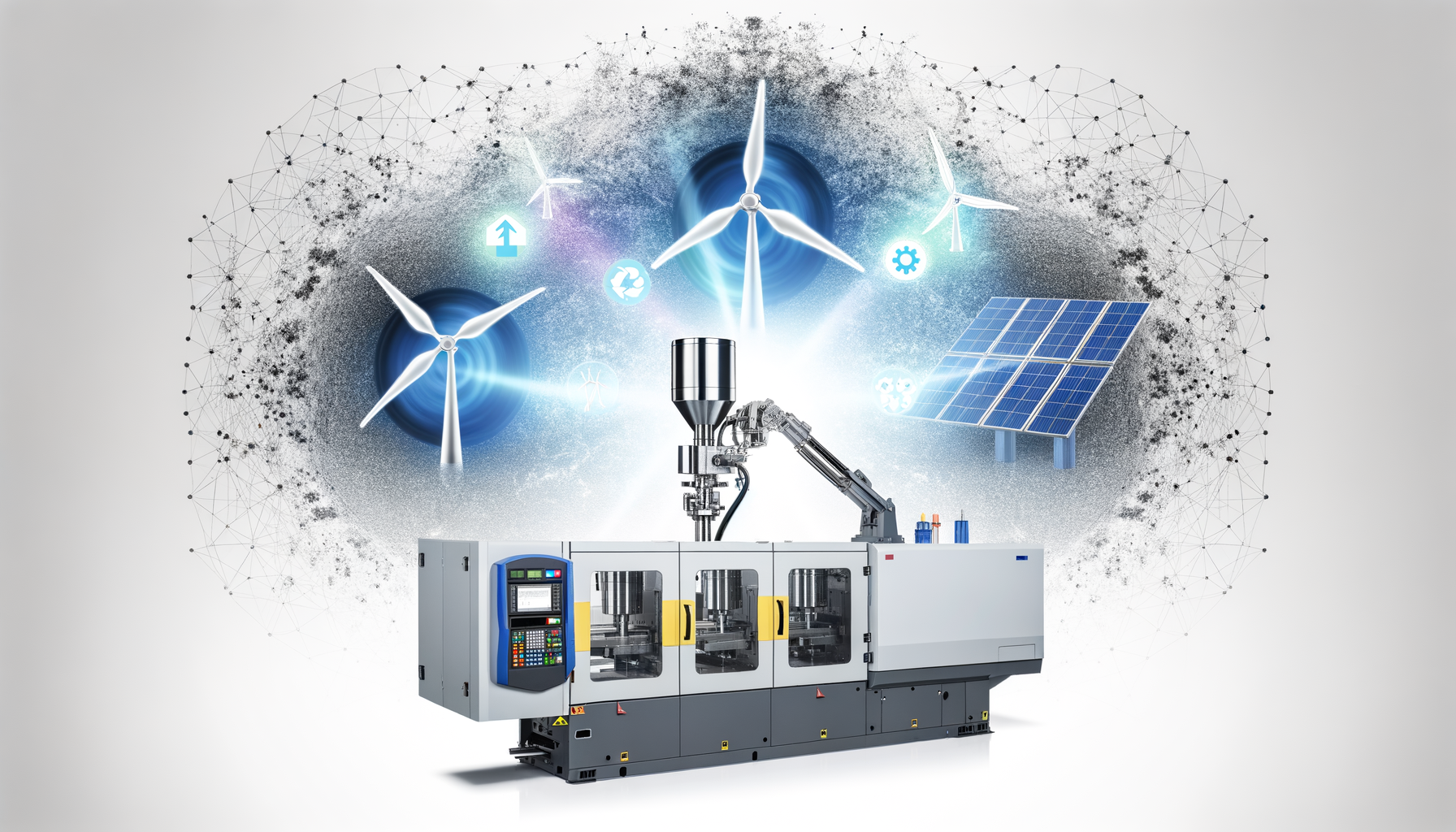Driving Sustainability: The Shift to Renewable Energy-Powered Three Platen Electric Injection Molding Machines
 Pranali Baderao
Pranali Baderao
In the rapidly evolving manufacturing landscape, sustainability is no longer an optional add-on but a fundamental prerequisite. The plastics industry, often scrutinized for its environmental impact, is witnessing a transformative shift with the integration of sustainable practices and technologies. One of the most promising advancements in this sphere is the adoption of sustainable three platen electric injection molding machines powered by renewable energy sources. This shift not only addresses environmental concerns but also enhances operational efficiency and drives economic benefits for manufacturers.
Understanding Three Platen Electric Injection Molding Machines
Three platen electric injection molding machines represent a significant technological progression in the molding industry. Unlike traditional two-platen machines, these machines feature a third platen, allowing for more extensive mold configurations and increased clamping force. This design facilitates the production of larger and more complex parts with higher precision and faster cycle times.
Electric injection molding machines are preferred over hydraulic ones due to their energy efficiency, accuracy, and lower noise levels. When combined with the three platen configuration, these machines exemplify a powerhouse of innovation that pushes the boundaries of manufacturing capabilities.
Sustainability Challenges in Traditional Injection Molding
The conventional injection molding process, driven mainly by hydraulic systems powered by fossil fuels, has posed significant environmental challenges. High energy consumption, greenhouse gas emissions, and resource wastage have been areas of concern. Additionally, the reliance on non-renewable energy sources exacerbates the carbon footprint of manufacturing plants.
Manufacturers face pressure from regulatory bodies, consumers, and industry stakeholders to adopt greener technologies that align with global sustainability goals. The quest for sustainable manufacturing has led to the exploration of eco-friendly alternatives and the integration of renewable energy.
Embracing Renewable Energy for Injection Molding
Integrating renewable energy sources such as solar, wind, and hydroelectric power into manufacturing processes is a pivotal step toward reducing carbon emissions. Facilities equipped with solar panels or connected to green grids can significantly cut their dependence on fossil fuels.
When three platen electric injection molding machines are powered by renewable energy, the environmental benefits multiply. These machines inherently consume less energy than their hydraulic counterparts, and combining this with clean energy sources results in a substantial decrease in carbon footprint.
Key Benefits of Sustainable Three Platen Electric Injection Molding Machines
1. Energy Efficiency and Cost Savings
Electric machines are known for their lower energy consumption. By optimizing motor and servo drive technology, they minimize power use without compromising performance. When paired with renewable energy, operational costs decrease further due to reduced utility bills and potential government incentives for green energy use.
2. Enhanced Precision and Quality
Electric drives provide superior control over injection and clamping processes, leading to higher precision. The three platen design enhances mold flexibility, enabling manufacturers to produce high-quality, intricate parts consistently. This reduces scrap rates and material waste.
3. Lower Environmental Impact
The combination of reduced energy consumption and clean energy sources drastically lowers greenhouse gas emissions. Additionally, electric machines typically require fewer fluids and produce less noise, contributing to a cleaner and healthier work environment.
4. Compliance and Brand Reputation
Adopting sustainable technologies assists companies in meeting stringent environmental regulations. It also bolsters brand reputation as customers and partners increasingly prefer environmentally responsible businesses.
Implementing Sustainable Practices in Injection Molding Operations
To successfully transition to sustainable three platen electric injection molding powered by renewable energy, manufacturers should consider the following strategies:
Energy Audits and Assessments: Evaluate current energy usage patterns and identify opportunities for efficiency improvements.
Infrastructure Investment: Invest in renewable energy installations like solar panels, or opt for green energy contracts from utility providers.
Technology Upgrades: Replace outdated hydraulic machines with state-of-the-art three platen electric injection molding machines.
Employee Training: Educate staff on sustainable practices and encourage energy-conscious behaviors.
Process Optimization: Utilize advanced software and automation to optimize cycle times and reduce energy wastage.
Challenges and Solutions
Transitioning to sustainable injection molding is not without challenges. Initial capital expenditure for new machinery and renewable energy infrastructure can be significant. However, the long-term savings in operational costs and the avoidance of potential regulatory fines provide compelling incentives.
Moreover, advancements in financing options, government subsidies, and leasing programs make it easier for manufacturers to invest in sustainable technologies. Collaboration with technology providers and energy companies can also streamline the transition.
The Future of Injection Molding is Green
The shift towards sustainable three platen electric injection molding machines powered by renewable energy is more than a trend-it's a strategic imperative for the plastics manufacturing industry. This transformation promises a future where productivity, quality, and sustainability go hand in hand.
Manufacturers embracing this shift not only contribute to environmental preservation but also position themselves as industry leaders. They benefit from cost reductions, regulatory compliance, and improved market competitiveness.
As the global community rallies around climate action, the plastics industry’s move to greener technologies will play a critical role in achieving environmental goals. Sustainable three platen electric injection molding machines powered by renewables are paving the way for a cleaner, smarter, and more efficient manufacturing world.
Conclusion
Adopting sustainable three platen electric injection molding machines powered by renewable energy marks a revolutionary step toward minimizing the plastics industry's environmental footprint while maximizing production efficiency. This paradigm shift aligns with global sustainability goals, regulatory demands, and market expectations.
For manufacturers, the integration of these technologies signals a commitment to innovation and responsibility-driving a competitive edge and fostering a sustainable future for all stakeholders. Now is the time to embrace this sustainable revolution and contribute to a greener planet through smarter manufacturing practices.
Explore Comprehensive Market Analysis of Three Platen Electric Injection Molding Machine Market
SOURCE-- @360iResearch
Subscribe to my newsletter
Read articles from Pranali Baderao directly inside your inbox. Subscribe to the newsletter, and don't miss out.
Written by
